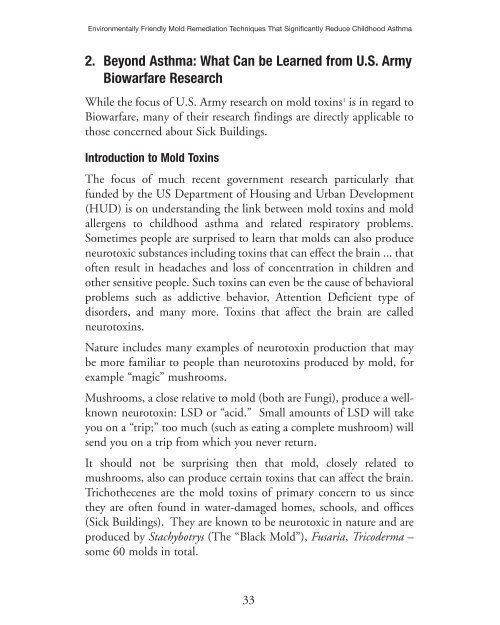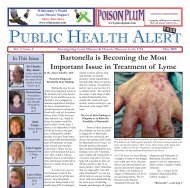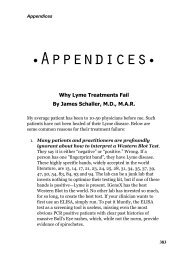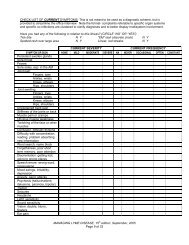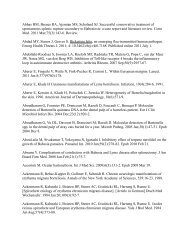Download Here - James L. Schaller, M.D., M.A.R., P.C
Download Here - James L. Schaller, M.D., M.A.R., P.C
Download Here - James L. Schaller, M.D., M.A.R., P.C
Create successful ePaper yourself
Turn your PDF publications into a flip-book with our unique Google optimized e-Paper software.
Environmentally Friendly Mold Remediation Techniques That Significantly Reduce Childhood Asthma2. Beyond Asthma: What Can be Learned from U.S. ArmyBiowarfare ResearchWhile the focus of U.S. Army research on mold toxins 1 is in regard toBiowarfare, many of their research findings are directly applicable tothose concerned about Sick Buildings.Introduction to Mold ToxinsThe focus of much recent government research particularly thatfunded by the US Department of Housing and Urban Development(HUD) is on understanding the link between mold toxins and moldallergens to childhood asthma and related respiratory problems.Sometimes people are surprised to learn that molds can also produceneurotoxic substances including toxins that can effect the brain ... thatoften result in headaches and loss of concentration in children andother sensitive people. Such toxins can even be the cause of behavioralproblems such as addictive behavior, Attention Deficient type ofdisorders, and many more. Toxins that affect the brain are calledneurotoxins.Nature includes many examples of neurotoxin production that maybe more familiar to people than neurotoxins produced by mold, forexample “magic” mushrooms.Mushrooms, a close relative to mold (both are Fungi), produce a wellknownneurotoxin: LSD or “acid.” Small amounts of LSD will takeyou on a “trip;” too much (such as eating a complete mushroom) willsend you on a trip from which you never return.It should not be surprising then that mold, closely related tomushrooms, also can produce certain toxins that can affect the brain.Trichothecenes are the mold toxins of primary concern to us sincethey are often found in water-damaged homes, schools, and offices(Sick Buildings). They are known to be neurotoxic in nature and areproduced by Stachybotrys (The “Black Mold”), Fusaria, Tricoderma –some 60 molds in total.33


